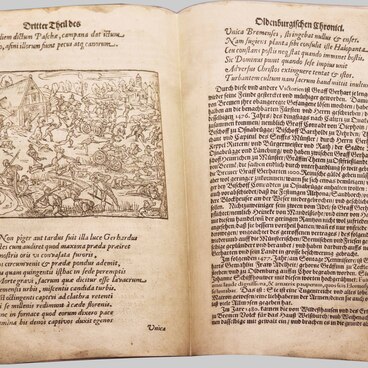The base of the desk set is made of matt opaque black stone. There are two square indentations for the ink tanks at an equal distance from the center, closer to the rear edge. A metal stand for pencils is fixed on the middle line — a glass with a carved surface decorated with an antique-style pattern. The body is connected to the base with a screw thread. The stone base is set on four metal legs. The upper parts of the front legs simultaneously serve as supports for pens, while the rear ones are rounded with a flat top.
Ink tanks are made of light transparent glass, in the form of a cube with beveled edges. The surface of the facets is divided into four parts with fascia. The lid is rounded, metal, with a chiseled top of a complex shape, surrounded by a narrow embossed ledge with a bead pattern. The pen is made of wood with a rounded top. The quill is open, classic, metallic, white, without a slot, with a fine tip and an elongated air hole.
There is a legend that a lazy but resourceful servant was the first to invent a metal nib for a quill. His master was a poet or an official, he wrote a lot, and the servant constantly had to sharpen his quills. Once he fixed a sharpened metal tip to a goose quill. The master was pleased. Obviously, those quills often ripped the paper and could not be re-sharpened. And they also did not have a longitudinal slit and an air hole, and without those parts, ink came off the quill very unevenly, leaving blots on paper. But already by the 1830s, metal quills began to gradually replace the products of goose farms. Instead of low-quality iron, alloys based on gold, osmium, iridium were used. Such alloys were very wear resistant and almost did not turn. Pen bodies were made of ebonite, silver, gold, ivory, mahogany. Writing sets were made of semi-precious and ornamental stones, ivory, horn plates. They were encrusted with precious and semi-precious metals.
Ink tanks are made of light transparent glass, in the form of a cube with beveled edges. The surface of the facets is divided into four parts with fascia. The lid is rounded, metal, with a chiseled top of a complex shape, surrounded by a narrow embossed ledge with a bead pattern. The pen is made of wood with a rounded top. The quill is open, classic, metallic, white, without a slot, with a fine tip and an elongated air hole.
There is a legend that a lazy but resourceful servant was the first to invent a metal nib for a quill. His master was a poet or an official, he wrote a lot, and the servant constantly had to sharpen his quills. Once he fixed a sharpened metal tip to a goose quill. The master was pleased. Obviously, those quills often ripped the paper and could not be re-sharpened. And they also did not have a longitudinal slit and an air hole, and without those parts, ink came off the quill very unevenly, leaving blots on paper. But already by the 1830s, metal quills began to gradually replace the products of goose farms. Instead of low-quality iron, alloys based on gold, osmium, iridium were used. Such alloys were very wear resistant and almost did not turn. Pen bodies were made of ebonite, silver, gold, ivory, mahogany. Writing sets were made of semi-precious and ornamental stones, ivory, horn plates. They were encrusted with precious and semi-precious metals.



